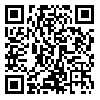Mon, Dec 29, 2025
| فارسی
Volume 22, Issue 2 (Summer 2020)
Advances in Cognitive Sciences 2020, 22(2): 33-44 |
Back to browse issues page
Download citation:
BibTeX | RIS | EndNote | Medlars | ProCite | Reference Manager | RefWorks
Send citation to:



BibTeX | RIS | EndNote | Medlars | ProCite | Reference Manager | RefWorks
Send citation to:
sheykh Fendreski T, Moradi A, Effat Panah M, Sadeghi M. The modality effect of working memory training on attentional function of children with attention-deficit/hyperactivity disorder in CANTAB. Advances in Cognitive Sciences 2020; 22 (2) :33-44
URL: http://icssjournal.ir/article-1-1054-en.html
URL: http://icssjournal.ir/article-1-1054-en.html
1- . PhD Student in Cognitive Psychology, Department of Cognitive Psychology, Institute for Cognitive Science Studies, Tehran, Iran
2- Professor of Clinical Psychology, Department of Clinical Psychology, Kharazmi University, Tehran, Iran
3- Associate Professor of Child and Adolescent Psychiatry, Ziaeian Hospital, International Campus, Tehran University, Tehran, Iran
4- Assistant Professor of Assessment and Measurement, Department of Cognitive Psychology, Institute for Cognitive Science Studies, Tehran, Iran
2- Professor of Clinical Psychology, Department of Clinical Psychology, Kharazmi University, Tehran, Iran
3- Associate Professor of Child and Adolescent Psychiatry, Ziaeian Hospital, International Campus, Tehran University, Tehran, Iran
4- Assistant Professor of Assessment and Measurement, Department of Cognitive Psychology, Institute for Cognitive Science Studies, Tehran, Iran
Abstract: (3852 Views)
Introduction: Modality and how information is presented are among the most influential factors in attention processing, memory and learning. Even though children with ADHD show deficits in receiving integrated information from the visual and auditory systems and despite strong theoretical backgrounds, it has been less addressed in working memory interventions. Therefore, the effect of modality on working memory training in the near and far transfer was investigated through two Cambridge Neuropsychological Test Automated Battery (CANTAB) sub-tests.
Methods: This study was conducted as a 20-session intervention program on 61 children with ADHD in the age group of 8-12 years. They were evaluated by Spatial Working Memory (SWM) and Rapid Visual Information Processing (RVP) sub-tests. The subjects were divided into four groups: visual and auditory training groups and active and passive control groups. The intervention program included 40-60 minutes of working memory training for the training groups and 5-10 minutes for the active control group and no intervention for the non-active control group. Data were analyzed using multivariate analysis of covariance.
Results: Significant differences were observed in the post-test in both the visual and auditory groups in the sensitivity and bias (RVP), as well as total error index (SWM). However, in the use of strategy and reaction time, there were no significant differences.
Conclusion: Concerning the significant difference between training groups and control groups, the modality-based working memory training program seems successful. Also, the lack of significant difference between the visual and auditory groups indicates the same effect of both modalities on the near and far transfer.
Methods: This study was conducted as a 20-session intervention program on 61 children with ADHD in the age group of 8-12 years. They were evaluated by Spatial Working Memory (SWM) and Rapid Visual Information Processing (RVP) sub-tests. The subjects were divided into four groups: visual and auditory training groups and active and passive control groups. The intervention program included 40-60 minutes of working memory training for the training groups and 5-10 minutes for the active control group and no intervention for the non-active control group. Data were analyzed using multivariate analysis of covariance.
Results: Significant differences were observed in the post-test in both the visual and auditory groups in the sensitivity and bias (RVP), as well as total error index (SWM). However, in the use of strategy and reaction time, there were no significant differences.
Conclusion: Concerning the significant difference between training groups and control groups, the modality-based working memory training program seems successful. Also, the lack of significant difference between the visual and auditory groups indicates the same effect of both modalities on the near and far transfer.
Type of Study: Research |
Received: 2020/01/9 | Accepted: 2020/06/10 | Published: 2020/06/30
Received: 2020/01/9 | Accepted: 2020/06/10 | Published: 2020/06/30
Send email to the article author
| Rights and permissions | |
 |
This work is licensed under a Creative Commons Attribution-NonCommercial 4.0 International License. |






